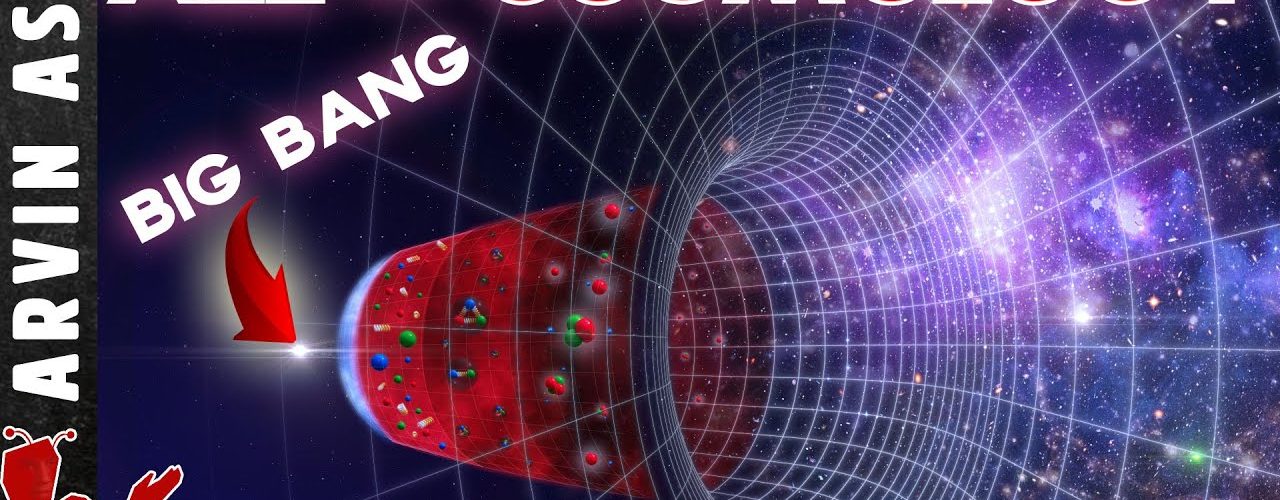Thank you to Wondrium for sponsoring today’s video! Signup for your FREE trial to Wondrium here: http://ow.ly/kEFK50LnkVb
SUMMARY:
All cosmology: A brief history of the universe, from the Big bang to today by Arvin Ash. Our view of modern Cosmology has largely been shaped by discoveries made over only about the last 100 years. 1920s – Edwin Hubble discovered galaxies outside our own Milky Way, and that the universe is expanding. 1949 – Fred Hoyle coined the term “Big Bang.” Penzias and Wilson discovered the Cosmic Microwave Background, or CMB, which is strong evidence for the Big Bang. 1970s – Vera Rubin found evidence for dark matter. 1980s – Alan Guth developed the theory of Cosmic Inflation. 1990’s – Evidence of dark matter was discovered. 2015 – Gravitational waves were detected.
But modern cosmology began with Einstein’s formulation of the theory of General Relativity. It described how mass and energy could change the underlying space and time itself. And this change is what manifests as gravity. Plugging everything into the equations gives us a model of our universe.
We know our visible universe is expanding, so if we turn back time, it should be infinitely small. This is called the singularity. This may not be real, but we know the early universe was very dense and hot. It was compressed to a very small size. How can the entire universe fit into the size of a swimming pool? The universe was all energy, no particles. And energy has no size limit. The temperature is just very high at smaller volumes.
The timeline of the universe can be divided into 6 stages. The first stage at t=0, is the birth of the universe started from perhaps a singularity 13.8 billion years ago. Stage 2 is cosmic inflation at t=10^-36 seconds, and temp of 10^32 Kelvin. Stage 3 is when elementary particles formed at t= 10^-11 seconds. The temperature cooled to 10^18K. Stage 4 is when nuclei formed at t=180 seconds, temperature was 1 billion Kelvin. Stage 5 is Recombination, when atoms formed at t=380,000 years. Temperature was 3000 K. The first light of the universe can be detected at this point, called the cosmic microwave background or CMB. Stage 6 is when stars, galaxies and larger structures formed.
Minor temperature differences can be detected on the CMB. This is what provided the seeds for large scale structures of the universe. Stars formed when gas clouds consisting of hydrogen and helium combined and gravitational pressure increased over time. Eventually, the pressure condensed the ball of gas and ignited forming stars. Elements heavier than helium formed in the cores of early stars, which exploded in supernovae explosions to form successive generations of stars.
Our sun formed when a gravitational clump formed somewhere within a cloud of gas or nebula, consisting of prior supernovae explosions. When it got heavy enough to fuse hydrogen in its core, began to shine. The leftover debris from the sun’s birth consisting of heavier elements formed a proto-planetary disk which accreted over time to form the planets. That’s how the earth was formed.
Galaxies are vast collections of stars like our sun. But these visible forms of matter do not appear to have enough mass to keep most galaxies gravitationally bound together. Calculations suggest that up to 5X more mass forms an invisible halo around galaxies and galaxy clusters that keeps them gravitationally bound. This is known as dark matter.
Galaxies spin due to conservation of angular momentum. The rotation is also why galaxies are generally flat. If you take any object and spin it, it will flatten. The exact details of why we have the different galaxy types are not fully known.
#cosmology
#bigbang
There is something that accounts for more than two thirds of all the energy we observe in the universe. It’s dark energy which is like an anti-gravity force that pervades all of spacetime. It is accelerating the expansion of the universe. So in the early universe, where dark matter dominates, the attractive force of gravity reigns supreme, and things got together and formed structures.
But as the universe aged, dark energy became more dominant, and made things move further away from each other. And there seems to be nothing that will stop the universe from expanding at an ever accelerating pace.







